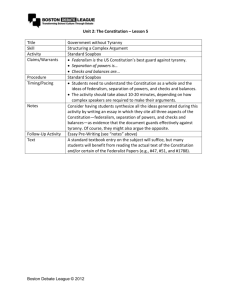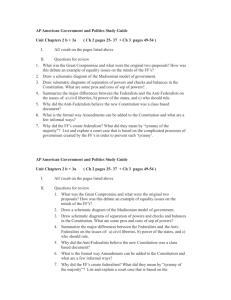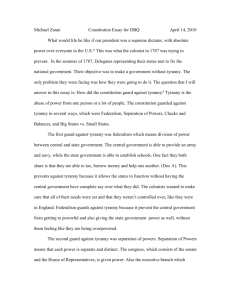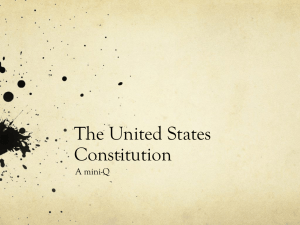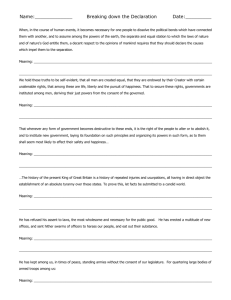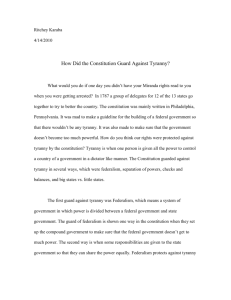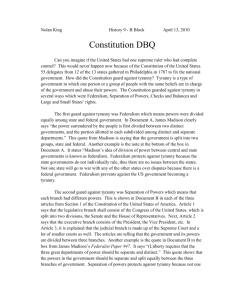history dbq essay - Constitution-A
advertisement
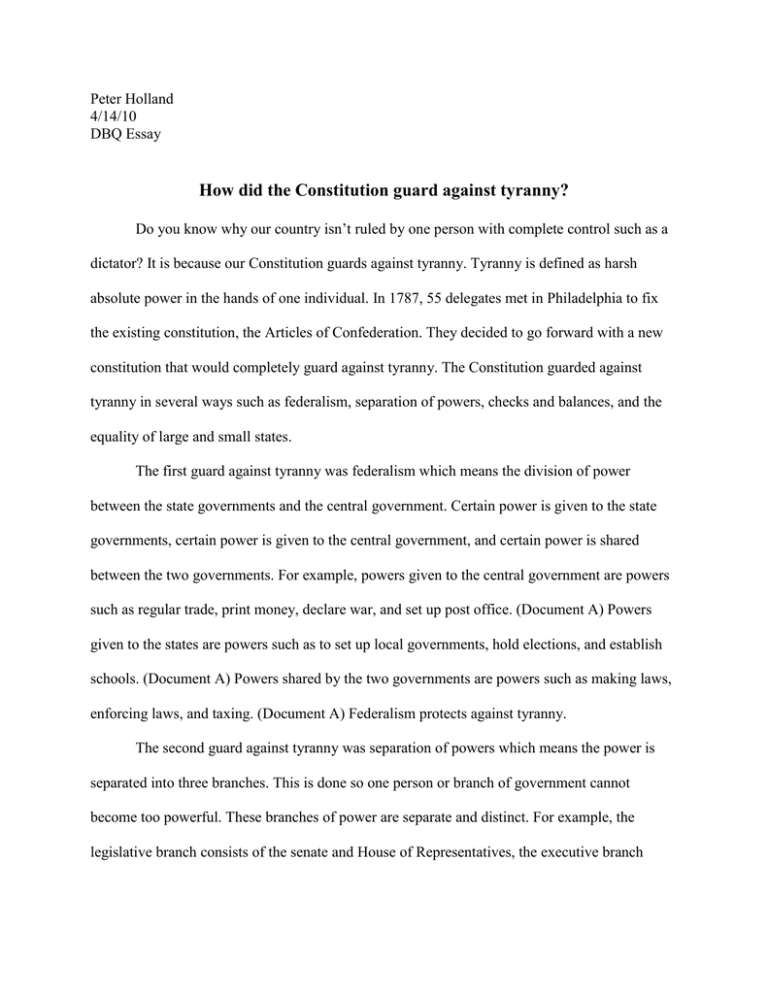
Peter Holland 4/14/10 DBQ Essay How did the Constitution guard against tyranny? Do you know why our country isn’t ruled by one person with complete control such as a dictator? It is because our Constitution guards against tyranny. Tyranny is defined as harsh absolute power in the hands of one individual. In 1787, 55 delegates met in Philadelphia to fix the existing constitution, the Articles of Confederation. They decided to go forward with a new constitution that would completely guard against tyranny. The Constitution guarded against tyranny in several ways such as federalism, separation of powers, checks and balances, and the equality of large and small states. The first guard against tyranny was federalism which means the division of power between the state governments and the central government. Certain power is given to the state governments, certain power is given to the central government, and certain power is shared between the two governments. For example, powers given to the central government are powers such as regular trade, print money, declare war, and set up post office. (Document A) Powers given to the states are powers such as to set up local governments, hold elections, and establish schools. (Document A) Powers shared by the two governments are powers such as making laws, enforcing laws, and taxing. (Document A) Federalism protects against tyranny. The second guard against tyranny was separation of powers which means the power is separated into three branches. This is done so one person or branch of government cannot become too powerful. These branches of power are separate and distinct. For example, the legislative branch consists of the senate and House of Representatives, the executive branch consists of the President, and the judicial branch consists of the Supreme Court. (Document B) Separation of powers protects against tyranny. The third guard against tyranny was checks and balances which means each branch can check on each other. This makes sure that one branch cannot get to powerful. For example, congress can approve presidential nominations and impeach the President from office, but the President can veto a Congressional legislation. (Document C) Another example is the president nominates judges, but the Court can declare presidential acts unconstitutional. (Document C) A third example is the court can declare laws unconstitutional, but congress can impeach judges. (Document C) Checks and Balances protect against tyranny. The fourth guard against tyranny was the equality of large and small states which means larger states are not powerful over small states. For example, the senate of the United States is composed of two senators from each state, and the House of Representatives are appointed by population. (Document D). The equality of large and small states protect against tyranny. The Constitution guarded against tyranny in several ways such as federalism, separation of powers, checks and balances, and equality of large and small states. This question is significant because if our constitution did not guard against tyranny, we could be living in a dictatorship right now. It is important to understand how the Constitution guarded against tyranny because it is important to know about how your country’s government was made and formed. The Constitution guarded against tyranny in many ways!

